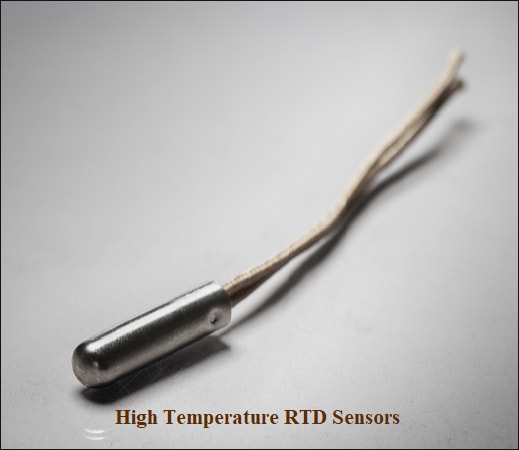Enter any two known values and press calculate to solve for the others.
Sensors are an integral part of several electronic and electromechanical devices, equipment and machinery across industries. Temperature and pressure monitoring is required in several manufacturing processes. Certain temperature and pressure ranges need to be maintained for the materials being used as well as the machine’s health. Sensors such as RTDs, thermocouples, thermistors, and so on are widely used across industries. They may be integrated into the system for complete or partial automation. RTDs, or resistance temperature detectors, are some of the most popular temperature sensors for specific applications. This post discusses various types of RTDs and more.
Resistance temperature detectors are temperature sensors applicable in industrial processes or other applications where a continual monitoring and control of temperature is crucial for process execution and functioning. Here, the difference in temperature is measured based upon the resistance of the sensor. As the temperature increases, the sensor resistance also increases. The resistance is measured as an electric current passes through the sensor, producing a voltage. Using the resistance information, the sensor can determine the temperature. These sensors are mostly made of copper, nickel, or platinum. So, the base resistance and maximum temperature vary based on which metal is used. When deciding upon which metal to use for your RTD sensor, be aware of your application requirements. For instance, platinum mostly has a base resistance of 100 Ohms at 0 degrees Celsius and can withstand higher temperatures than copper or nickel. Choosing the correct metal for your application is crucial and will result in tighter tolerances.
Mostly these probes are made of two or three wires. The latter offer more temperature accuracy than the former. Some applications may need just a temperature range and not a highly accurate output. Two-wired RTDs are useful in such applications. There are four-wired sensors as well, they have tighter temperature output tolerances. All these wire configurations can be incorporated into the two main types of RTDs:
1. Surface Mount RTDs: As the term implies, surface mount RTD temperature sensors can be mounted on the required object’s surface, with a non-intrusive process. The temperature is measured through the contact surface. These sensors are flexible and can be adjusted to the shape and size of the object. They can be mounted to both flat and curved surfaces.
2. High Temperature RTD Sensors: High temperature RTDs are usually made of platinum and are used for high temperature applications in harsh industrial environments. This is because platinum, as a metal, is more resistant to shocks, vibration and extreme temperatures compared to copper or nickel.

If you are looking for RTD temperature sensors, thermocouples or other temperature sensors, ensure you source them from reliable RTD and thermocouple sensor manufacturers and suppliers. Birk Manufacturing offers such sensors, flexible heaters, and integrated systems applicable across industries. The company offers several levels of customization to suit your application requirements.